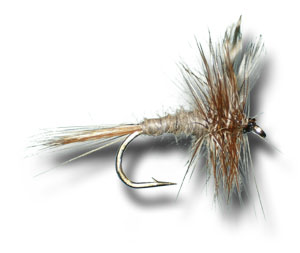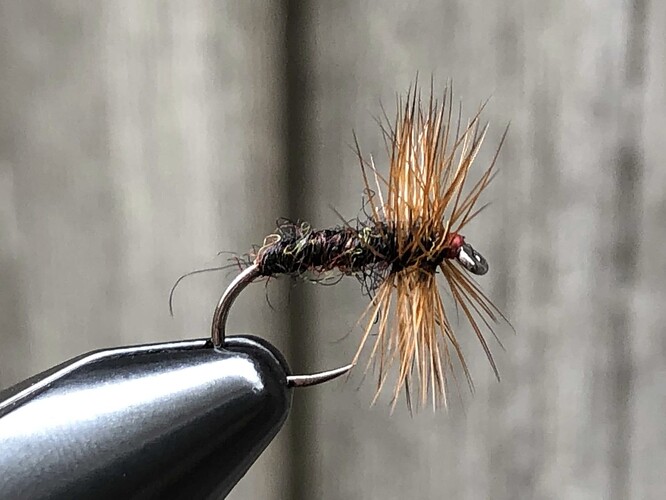As a general note, I believe everything goes and is valid when it comes to fishing. Especially if it works well. I come from fishing in so many disciplines and they all feed into what I do and don’t do on the water. This includes tenkara.
Karl, I am responding to your quote but this total response is for all.
Tenkara purists
Regarding Tenkara purists. Frankly, they do not exist and probably never existed. I know some of the guys who were marked as purists. I feel they are wildly misunderstood and just got swept up in conversations with people who just want to be contrary. Most of their suggestion was to learn true tenkara techniques as those techniques are what will really open the doors to maximize productivity using fixed line. Funny, most just received so much resistance they just gave up trying. It is also ironic that when the discover tenkara group presents the exact same material, people seem to listen. Perhaps some of the concepts needed to be spoon fed or people needed to pay for it.
A hoe and a pick axe have overlap in functionality but each one is engineered to do some things better. There are many things you can do with a fixed line rod that are absolutely impossible with a traditional fly rod and reel. Ignoring these differences and related techniques do not make one an innovator, it just makes one ignorant. Using a hoe to pry stumps or using a pick axe to mend a garden can be done but just not as efficiently.
My suggestion to all in this forum. Be a sponge. Try it all and enjoy the journey. You will be amazed in what you will learn. It is true, there is no right or wrong way, but in order to get the most of the tools we are using, it is best to educate yourself in all potential usage of your chosen tool . When I fish tenkara I am milking every ounce of utility from its engineering. When I fish a flyrod and reel, I am milking every ounce of its utility. My two applications have very little overlap in how and where I use them. Same goes with spinning gear.
Kebari Misunderstanding:
To me, the tenkara kebari is not a literal object or form, but a concept where we use one form to convert a willing fish through skill. The skill is fishing any fly we choose. Skill will allow us to fish it anywhere in the water column and change how we present it to convert a fish. This is about using what you have on your line to convert fish. I can say for a fact that I find incredible satisfaction in this, and I have been able to replicate the same success using saltwater fishing lures with spinning gear. For me, The best tenkara principle is the pleasure of doing more with less.
One fly:
So this is where we part ways stylistically. As we mature as anglers we all develop forms we have trust in. Those forms will be different for each of us. It evolves and we all go through phases of what our confidence fly is. To me it is the one fly I would pick if on a deserted island. Today for me, it would be a stiff hackle futsu style in a size 14. The simple reason is because of the utility I can get out of that fly. I can fish it anywhere in the water column including on the surface.
So, This is my winded way of saying topwater is not limited to drys and there are plenty of topwater tenkara techniques. Without changing my fly, I can also fish subsurface and deep. This is incredibly powerful and not something we will read in any western flyfishing book. I believe, finding versatility in what you put on your line makes one a better angler. It requires skill and creativity in presentation. The more time we can have lines in the water and less time changing flies, the more fish we can catch. This is a fork in the road where philosophies branch, one is clearly a tenkara philosophy and path and the other is a western flyfishing path.
It is not literally one fly, but the one fly that you have on your line. If you can learn to fish a single fly in the whole column, you have replaced the dry, the wet, and the beadhead. If you learn to impart motion on a fly in different ways you can convert fish that are not actively feeding or key in on motion of what they are feeding on. These fish have poor sight, so why all the subtle variations of flies? Tenkara is all about technique over which fly. If you listen to most masters tenkara anglers we often hear them state this.
Could we carry and cycle through more fly patterns? Sure.
If you could carry less and be as or more effective would you do it? Well, I believe I am.
dry flies:
I do not carry specifically designed dry fly forms because they often do not sink, and I can only fish them on top. This limits their versatility. If i thought I could benefit I would carry them, but I also feel most of the time top presentation is niche and I can use my futsu on top when I need to. To put things in perspective, I carry floatant in my bag since I started tenkara, I can say for certainty I have not used it at all in the last 5 seasons and probably should remove it from my pack.



